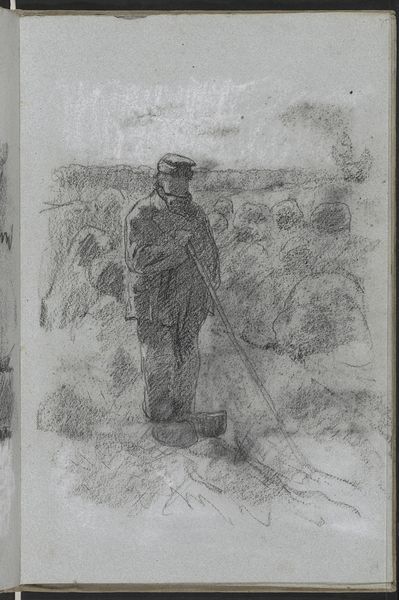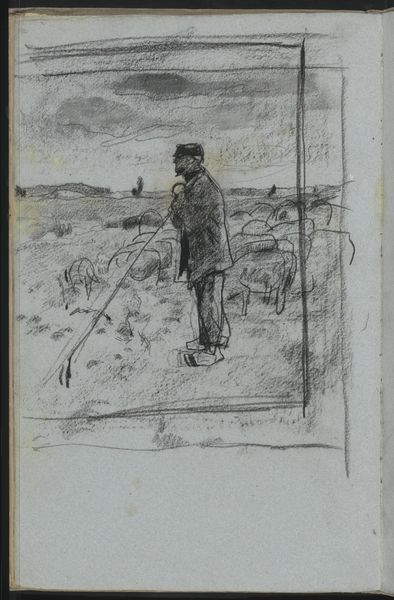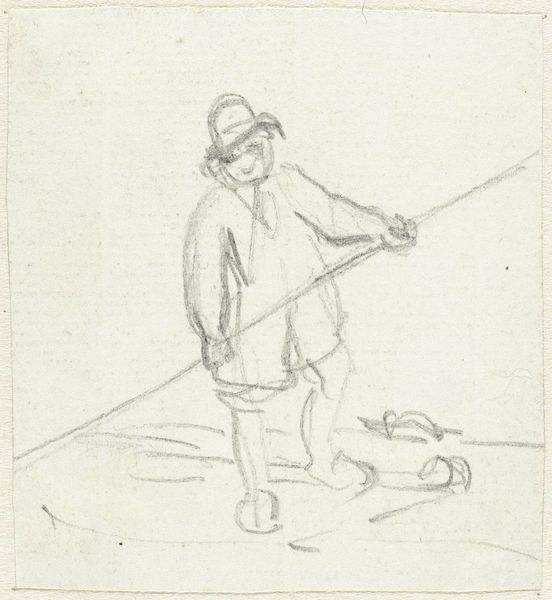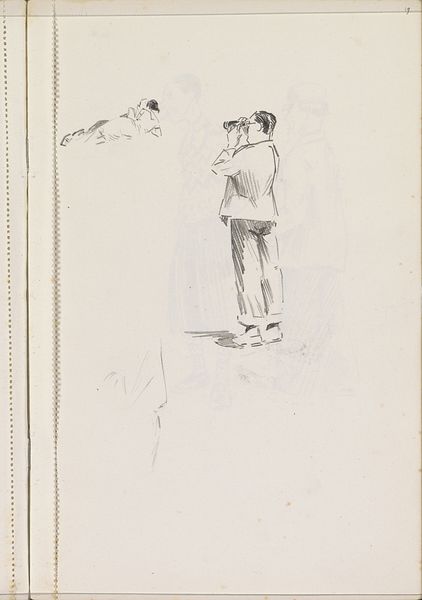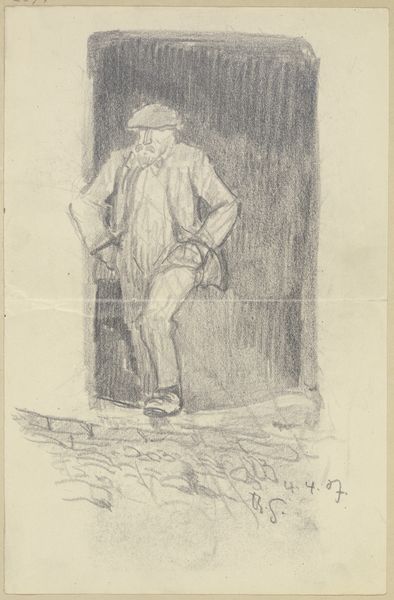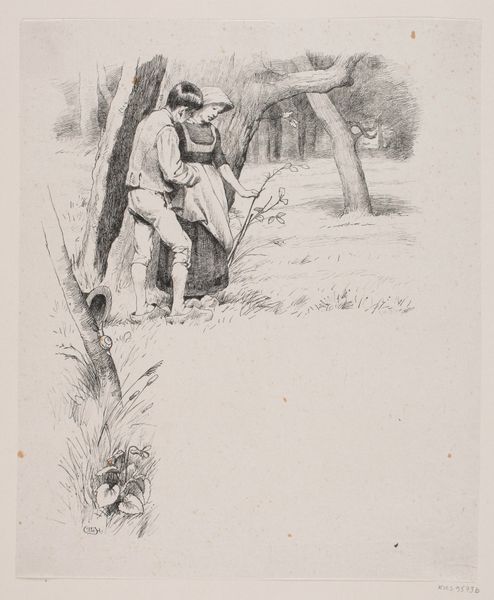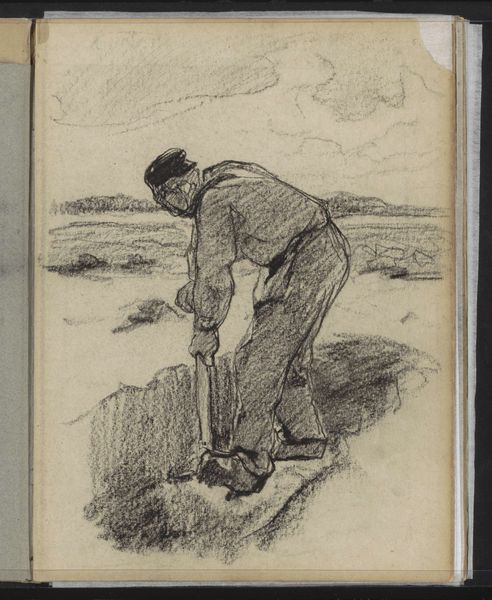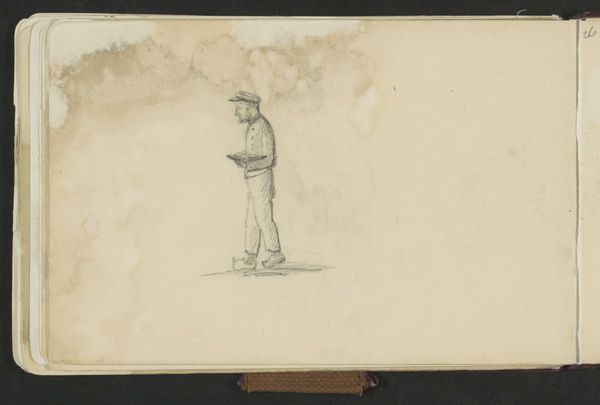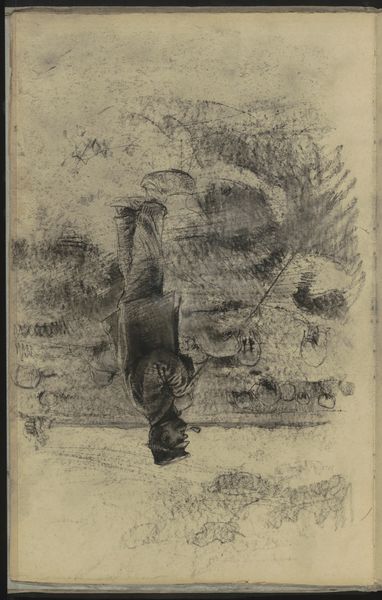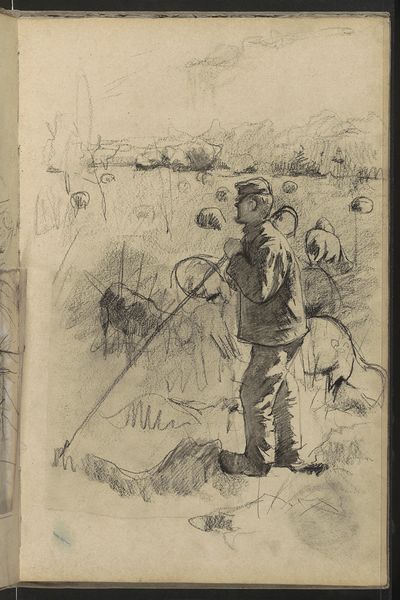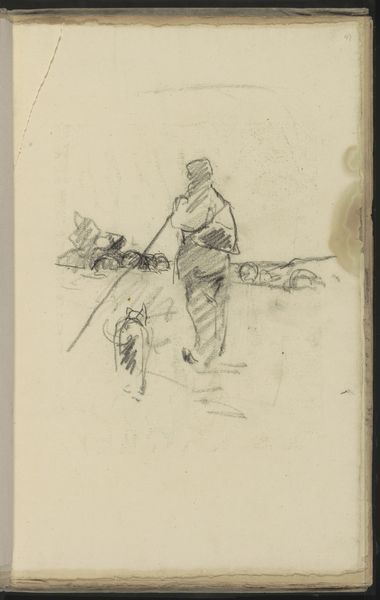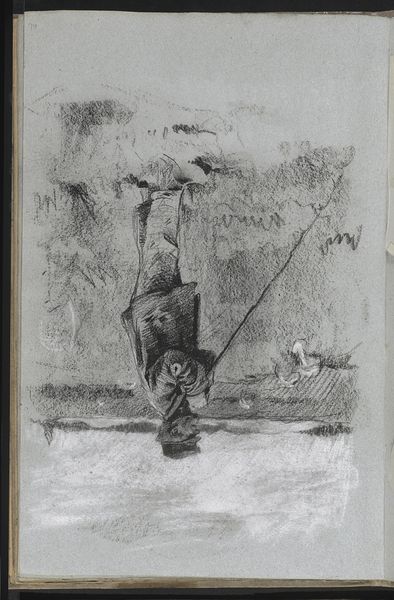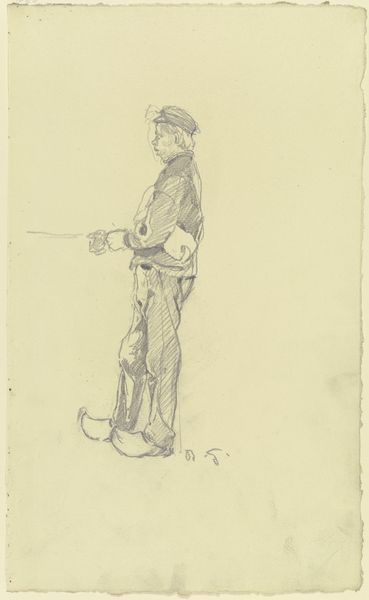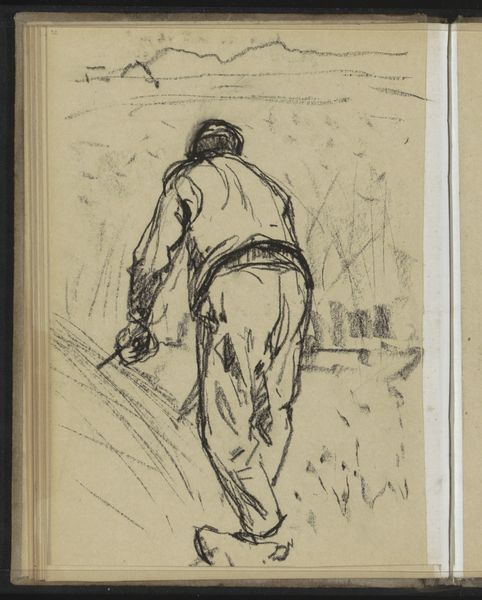
drawing, pencil
#
portrait
#
drawing
#
landscape
#
pencil
#
realism
Copyright: Rijks Museum: Open Domain
Editor: Here we have Willem Witsen's "Schaapherder die op zijn staf leunt", made between 1884 and 1887. It's a pencil drawing currently housed in the Rijksmuseum. It has such an unfinished, almost melancholic quality. How do you read this piece? Curator: It's tempting to view this as a straightforward realistic depiction of a shepherd. But I think we must also consider the context in which Witsen was working. Late 19th-century art was grappling with rapid industrialization and urbanization, often at the expense of rural communities and traditions. What statements were artists making by looking at and creating images of rural labor? What does it mean to center this shepherd? Editor: So, you’re saying there’s more to it than just a portrait of a shepherd? Curator: Precisely! Think about the role of art as a mirror reflecting social anxieties and power dynamics. A key figure that arises is the Shepherd himself. While Witsen attempts to portray realism, one might find there’s an element of romanticization inherent in idealizing rural life when it was, for many, a hard scrabble reality. Is the art itself an expression of that power? Also, consider: Who is seeing, and who is being seen? Editor: That's fascinating. I hadn't thought about it that way, considering the gaze and the power dynamics embedded within the art. Curator: Exactly! These artistic decisions are never neutral. Even what seems like a simple landscape contains hidden narratives. Editor: Thanks so much for making me look beneath the surface. I’ll definitely think about those contexts when looking at art in the future.
Comments
No comments
Be the first to comment and join the conversation on the ultimate creative platform.
